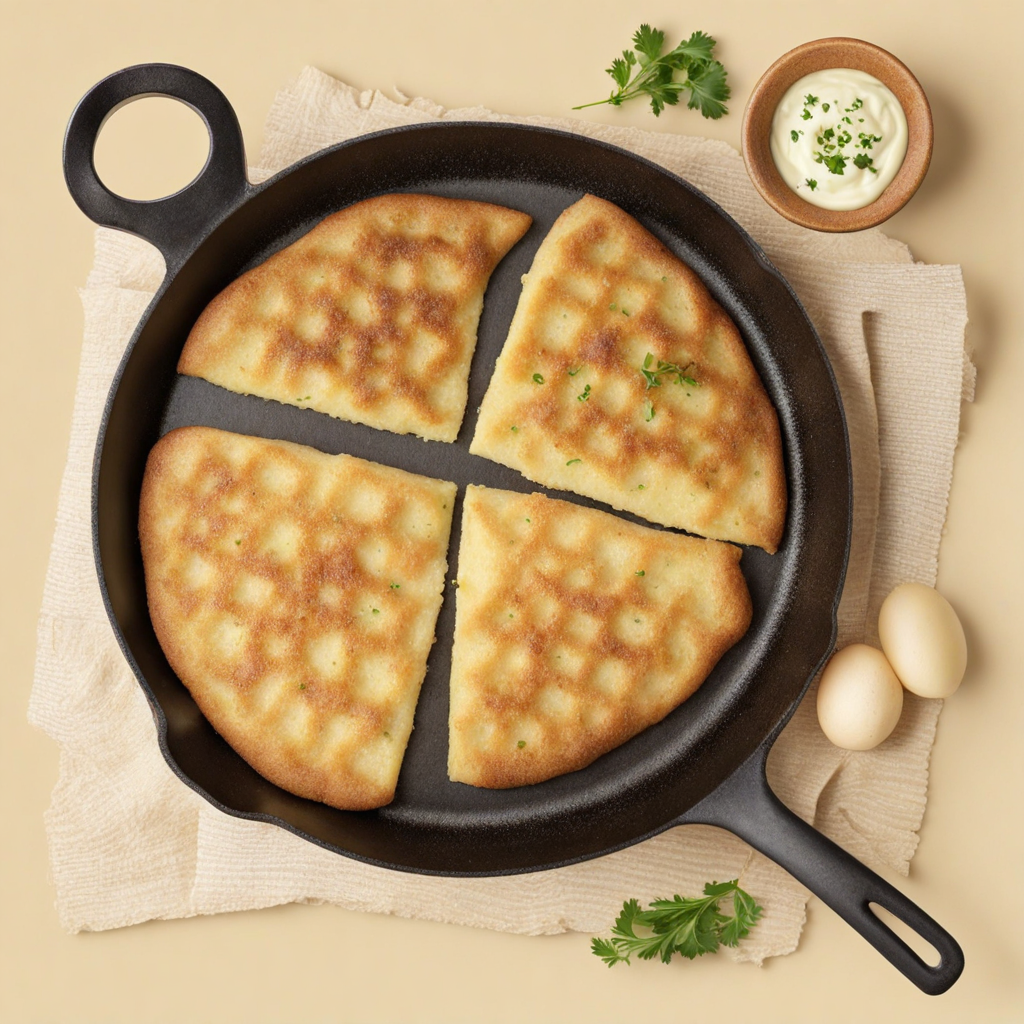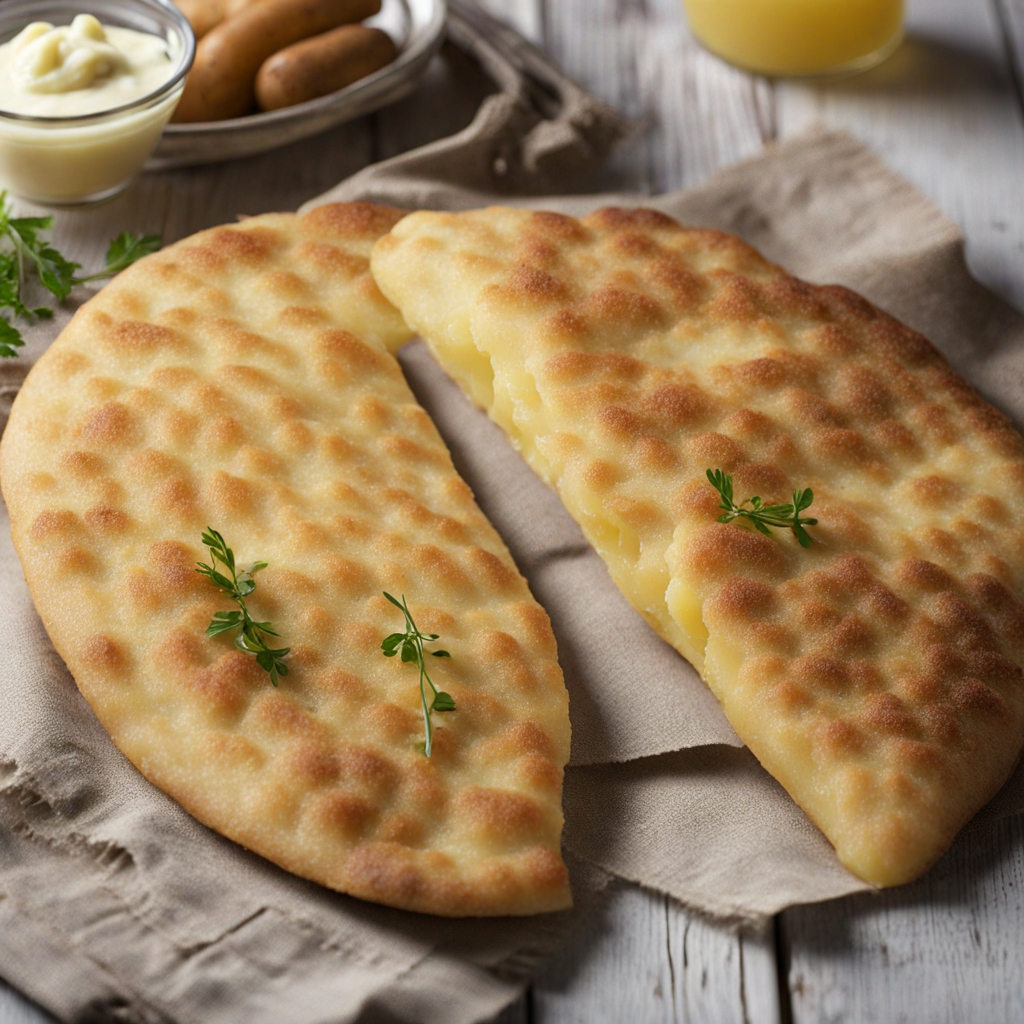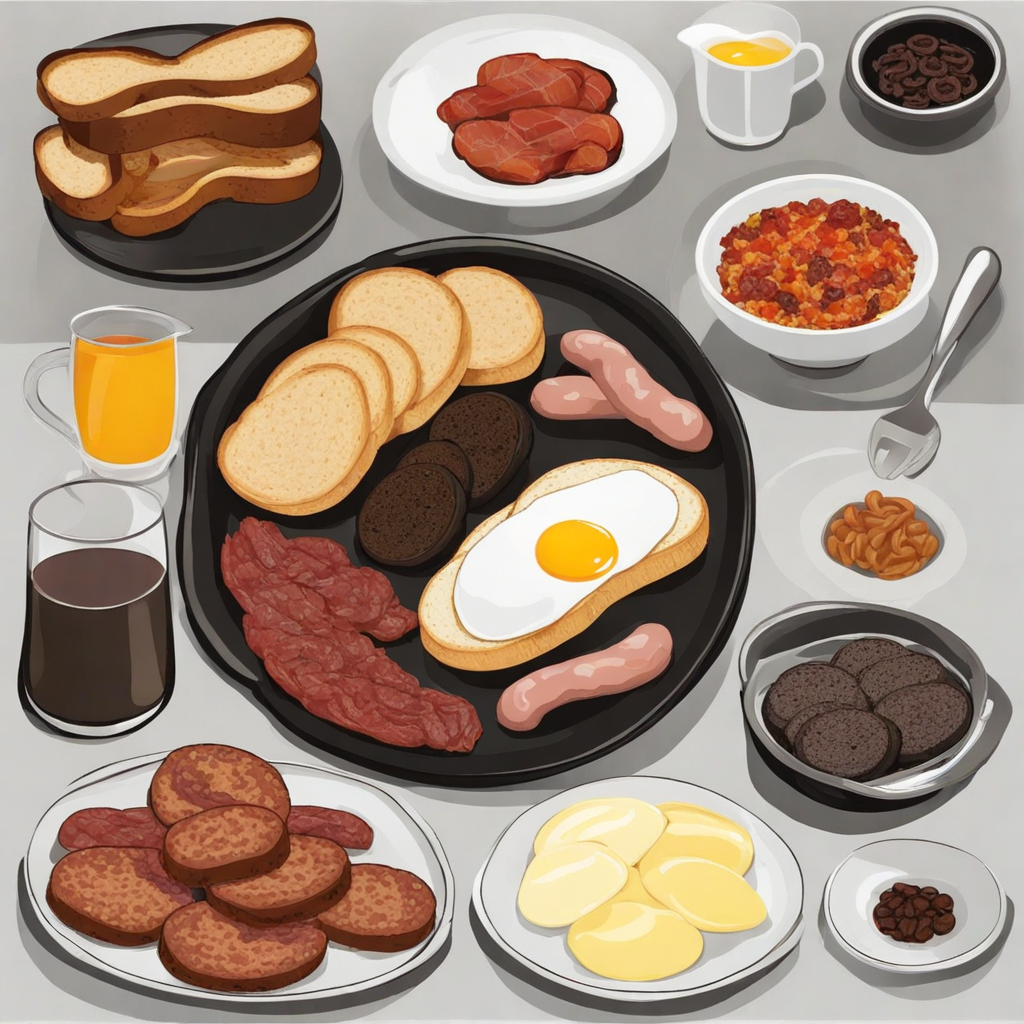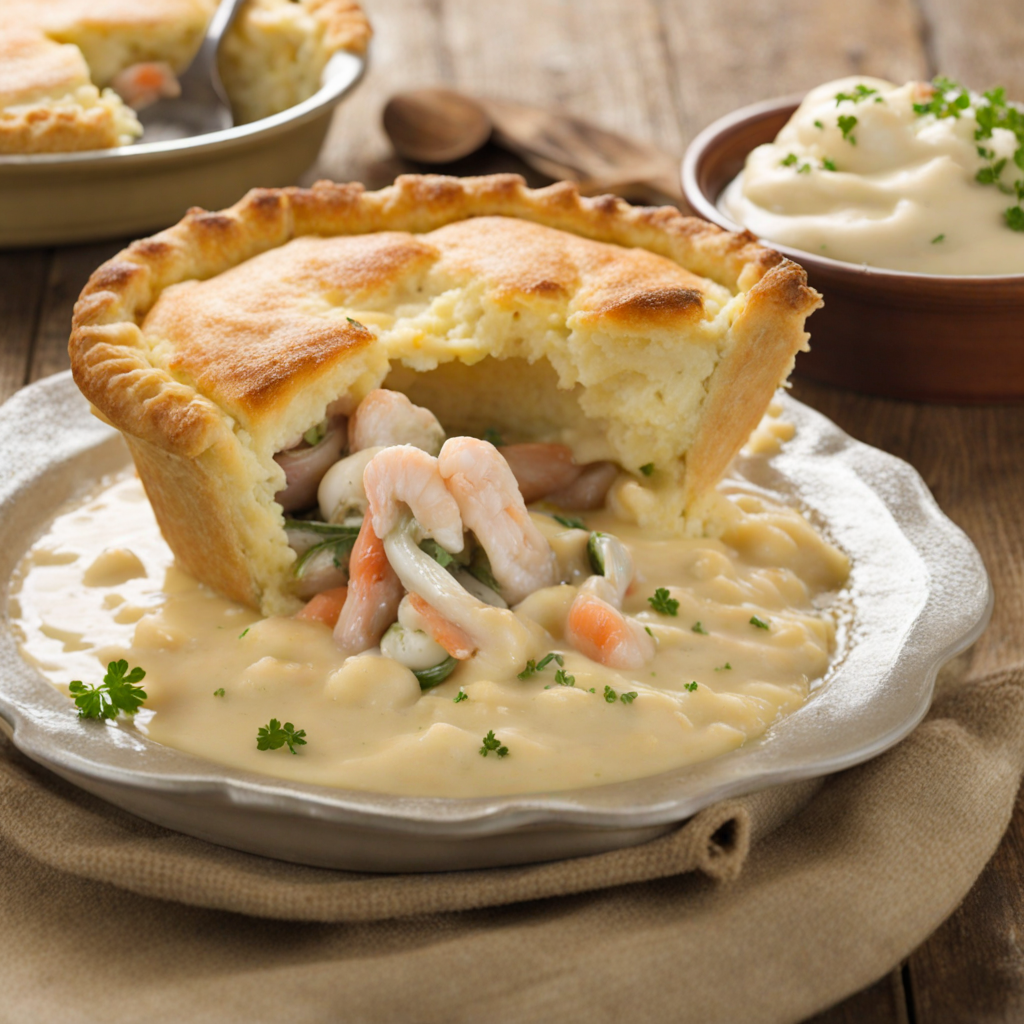Potato Farl
Potato Farl is a delightful Irish dish that showcases the humble potato in a unique and comforting way. This traditional potato cake is made by combining mashed potatoes with flour, baking powder, and a pinch of salt, forming a dough that is then shaped into a flat disc. The mixture is rolled out and cut into wedges, giving it its characteristic 'farl' shape, which translates to 'quarter' in Irish. The simplicity of the ingredients allows the natural flavor of the potatoes to shine through, making it a beloved staple in Irish homes, especially during breakfast or as a side dish. Once shaped, the potato farls are typically cooked on a griddle or frying pan until they develop a golden-brown crust. This cooking method imparts a slightly crispy exterior while keeping the inside wonderfully soft and fluffy. The aroma that wafts through the kitchen as they cook is irresistible, often enticing family members to gather around in anticipation. They are best served warm, and many enjoy them with a generous spread of butter, allowing it to melt into the crevices for an extra layer of richness. Potato Farl can be enjoyed in various ways, making it a versatile addition to any meal. Some people pair it with traditional Irish breakfast items, such as eggs, bacon, and sausage, while others might enjoy it with smoked salmon or even as a base for savory toppings. Additionally, it can be incorporated into modern dishes, like a hearty brunch featuring poached eggs and avocado. Regardless of how it's served, potato farls offer a delightful taste of Irish comfort food that is sure to please anyone looking to explore new culinary horizons.
How It Became This Dish
Origin and Ingredients Fearlán prátaí, commonly known as potato bread, is a traditional Irish food that has its roots deeply embedded in the agricultural practices and culinary traditions of Ireland. The potato, which became a staple crop in Ireland in the late 16th century, played a crucial role in shaping the dietary habits of the Irish people. Originally brought to Europe from the Andes Mountains of South America, the potato quickly adapted to the Irish climate and soil, leading to its widespread cultivation. By the 18th century, it had become a primary food source, especially for the poorer rural population. Fearlán prátaí is made primarily from mashed potatoes, flour, and sometimes baking soda, which gives it a unique texture and flavor. The simplicity of its ingredients reflects the resourcefulness of Irish cuisine, where people made the best use of what was available. The dish often incorporates buttermilk or sour milk, further enhancing its taste and nutritional value. Historically, it was a way to utilize leftover mashed potatoes, showcasing the traditional practice of minimizing waste in food preparation. \n Cultural Significance The cultural significance of fearlán prátaí extends beyond mere sustenance; it is a symbol of Irish identity and heritage. In rural communities, it was a staple food, often served alongside stews, fried fish, or simply with butter and jam. The dish is emblematic of the communal spirit in Ireland, where families would gather to share meals made from local ingredients. Traditional methods of preparation often involved cooking on a griddle or baking on an open fire, reflecting the close connection between food and the landscape. During the Great Famine of the 1840s, the potato became a tragic symbol of both abundance and scarcity. While fearlán prátaí was once a sign of nourishment, the blight that destroyed potato crops led to widespread hunger and suffering. The famine reshaped the Irish culinary landscape and caused waves of emigration, particularly to the United States. Despite this dark chapter, the resilience of the Irish people shone through, and fearlán prátaí emerged as a comforting reminder of home for many expatriates. \n Evolution Over Time As Ireland evolved through the 19th and 20th centuries, so too did fearlán prátaí. It adapted to the changing tastes and availability of ingredients, with variations emerging across different regions. In some areas, it became a more refined dish, incorporating additional flavors such as herbs, onion, or cheese. In urban settings, fearlán prátaí began to be sold in bakeries, making it accessible to a broader audience and cementing its place in modern Irish cuisine. The 20th century saw a revival of interest in traditional foods, as chefs and home cooks alike sought to reconnect with Ireland's culinary roots. Fearlán prátaí gained new popularity as part of the broader "slow food" movement, which emphasized the importance of traditional cooking methods and local ingredients. Restaurants began to feature the dish on their menus, often presenting it in innovative ways while honoring its traditional essence. \n Contemporary Practice Today, fearlán prátaí is celebrated as a versatile and nostalgic dish that continues to be cherished in Irish households. It can be enjoyed in various forms, from thick, fluffy pancakes to thinner, crispier versions, often referred to as boxty. The dish is not only a staple in Ireland but has also found its way into Irish pubs and restaurants around the globe, especially in countries with large Irish diasporas. In contemporary cooking, fearlán prátaí often serves as a canvas for creativity. Chefs experiment with different spices, fillings, and cooking techniques, showcasing the adaptability of this traditional food. For instance, some might incorporate sweet potatoes for added sweetness, while others may introduce ingredients like smoked salmon or seasonal vegetables to create gourmet versions that appeal to modern palates. \n Regional Variations Different regions of Ireland have their own takes on fearlán prátaí, each with unique characteristics. In Ulster, for example, a variant called "boxty" is particularly popular, made with a combination of grated raw potatoes and mashed potatoes, offering a distinct texture. In contrast, the Connacht version tends to be denser and is often served as a side dish to hearty meals. These regional variations highlight the rich tapestry of Irish culinary traditions and the adaptability of fearlán prátaí across different contexts. In addition to its variations, the dish has also been embraced in other cultures, especially in places where Irish immigrants have settled. In the United States and Canada, for instance, fearlán prátaí is sometimes served with a twist, integrating local ingredients and flavors while still honoring its Irish roots. This cross-cultural exchange not only preserves the dish's legacy but also allows it to evolve further in new culinary environments. \n Conclusion Fearlán prátaí stands as a testament to the resilience and creativity of the Irish people throughout history. From its humble beginnings as a means of using leftover potatoes to its current status as a beloved comfort food, it encapsulates the spirit of Irish culture and community. As food historians and culinary enthusiasts continue to explore and celebrate traditional dishes, fearlán prátaí remains a cherished symbol of Ireland's rich gastronomic heritage, bridging the past with the present and inviting future generations to partake in its legacy.
You may like
Discover local flavors from Ireland







